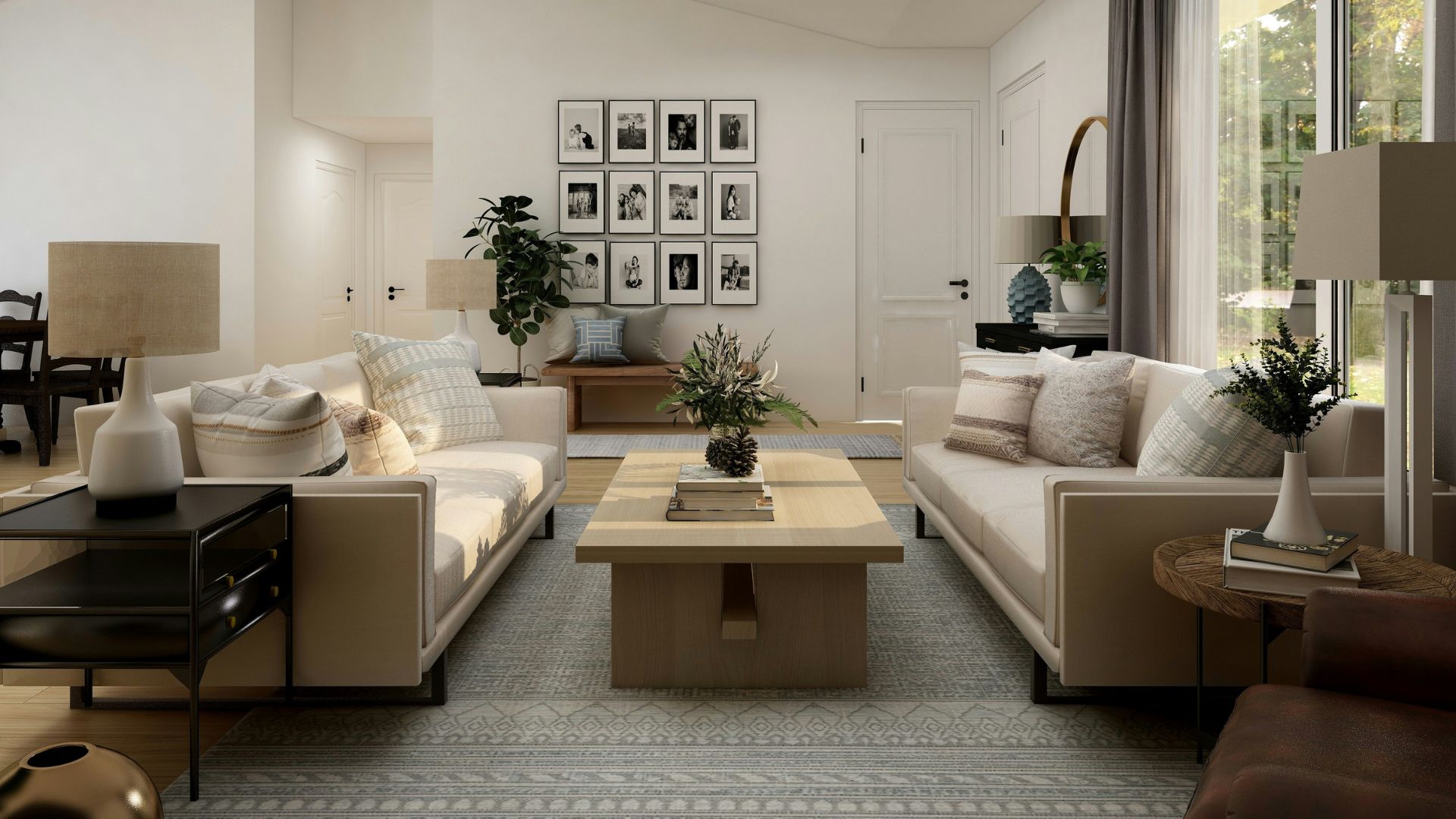
Did you ever walk into a room that looks decent on paper yet feels a little…awkward? Like the furniture showed up but forgot to introduce itself to the floor? That’s a space begging for a rug. Not just any rug, though—a well-placed, thoughtfully chosen one that tells your chairs and tables where to hang out.
Rugs create instant structure without knocking down walls or investing in elaborate renovations. They’re like the quiet directors behind the scenes, guiding each piece into position and giving your layout a reason to exist. In short, with the right placement and size, rugs convert chaos into flow. So, here are simple, smart, and stylish ways to use rugs to define every space.
Create A Focal Point Under The Coffee Table

Placing a rug beneath your coffee table instantly centers your living space, offering a visual anchor for surrounding furniture. In fact, mid-century modern interiors use this technique to soften minimalist walls, while in Feng Shui, the rug symbolizes grounding energy that stabilizes the room’s flow.
Separate The Dining Area In An Open Floor Plan

In an open floor plan, a rug beneath the dining table creates a definition. It marks the eating area as its own zone, subtly separating it from nearby kitchens or lounges. To maintain comfort, the rug’s edges should extend at least 24 inches beyond the table, allowing chairs to move freely without snagging the floor.
Frame The Bed With A Symmetrical Rug Layout

Symmetry around a bed’s setup brings visual order, promoting a calm, grounded atmosphere ideal for rest. Moreover, matching runners on each side echoes the comfort of upscale hotels while offering functional elegance. For rooms needing a visual stretch, slightly offsetting the rug’s position can alter the room’s proportions.
Anchor The Sofa In A Large Living Room

In expansive living rooms, rugs gather the furniture into a cohesive whole. Without one, even the most luxurious sectional can seem adrift in open space. Design experts suggest rugs span at least two-thirds of the sofa’s width to maintain proportion. This is especially important in great rooms with vaulted ceilings.
Define An Entryway Without Using Walls

Generally useful in open-concept spaces, rugs create a welcome zone while protecting high-traffic flooring. Vintage kilims are gaining popularity in this area, as they add warmth and heritage. To enhance the effect, many designers pair entry rugs with mirrors, brightening the space with reflected light.
Highlight A Reading Nook For Cozy Vibes
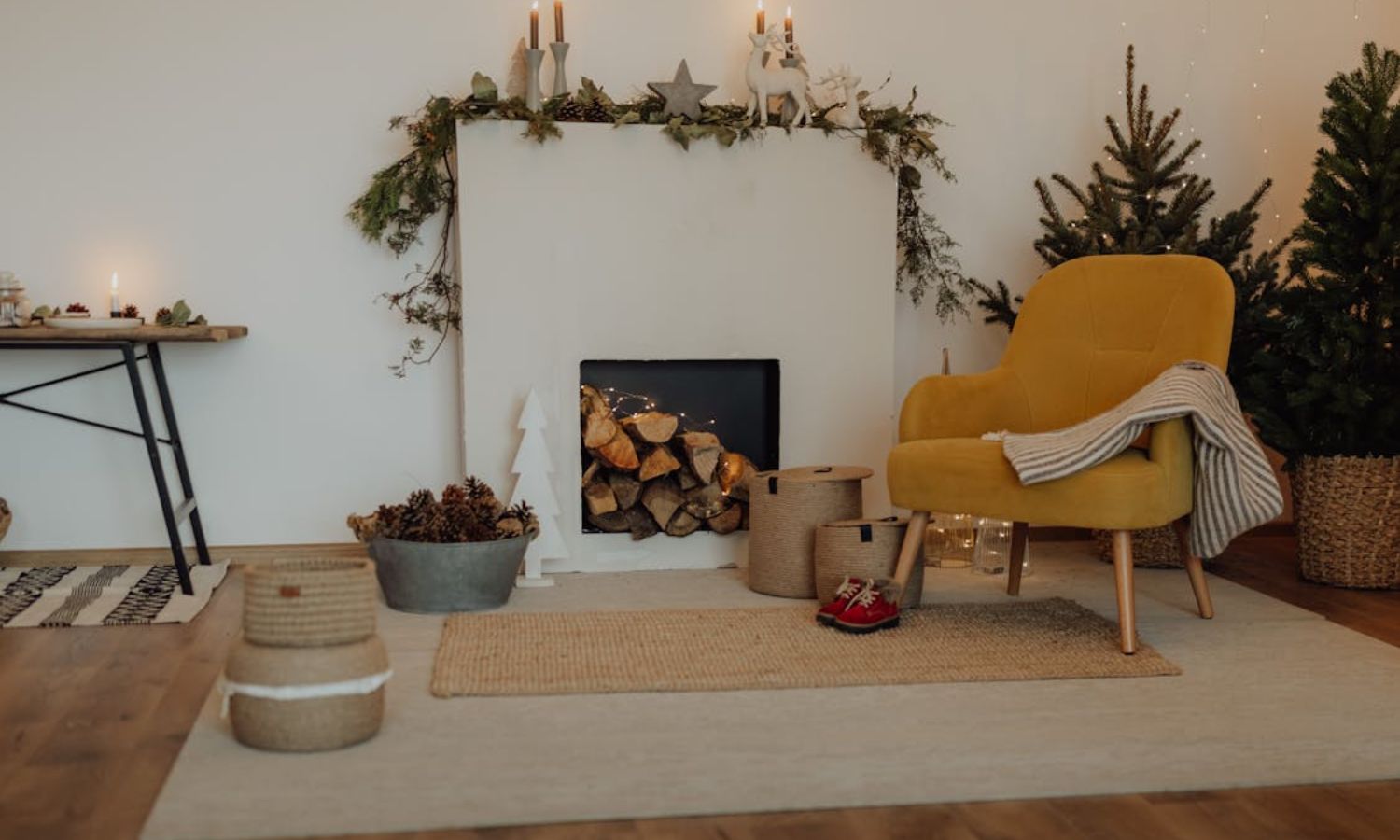
Lay down a plush rug beneath your chair and side table to carve out a reading nook with intention. This simple step defines the area visually and adds warmth underfoot. Ideal for quiet corners in larger rooms, it works well in open layouts. Scandinavian interiors often use rugs plus floor lamps to create inviting zones.
Use Layered Rugs To Add Depth And Texture
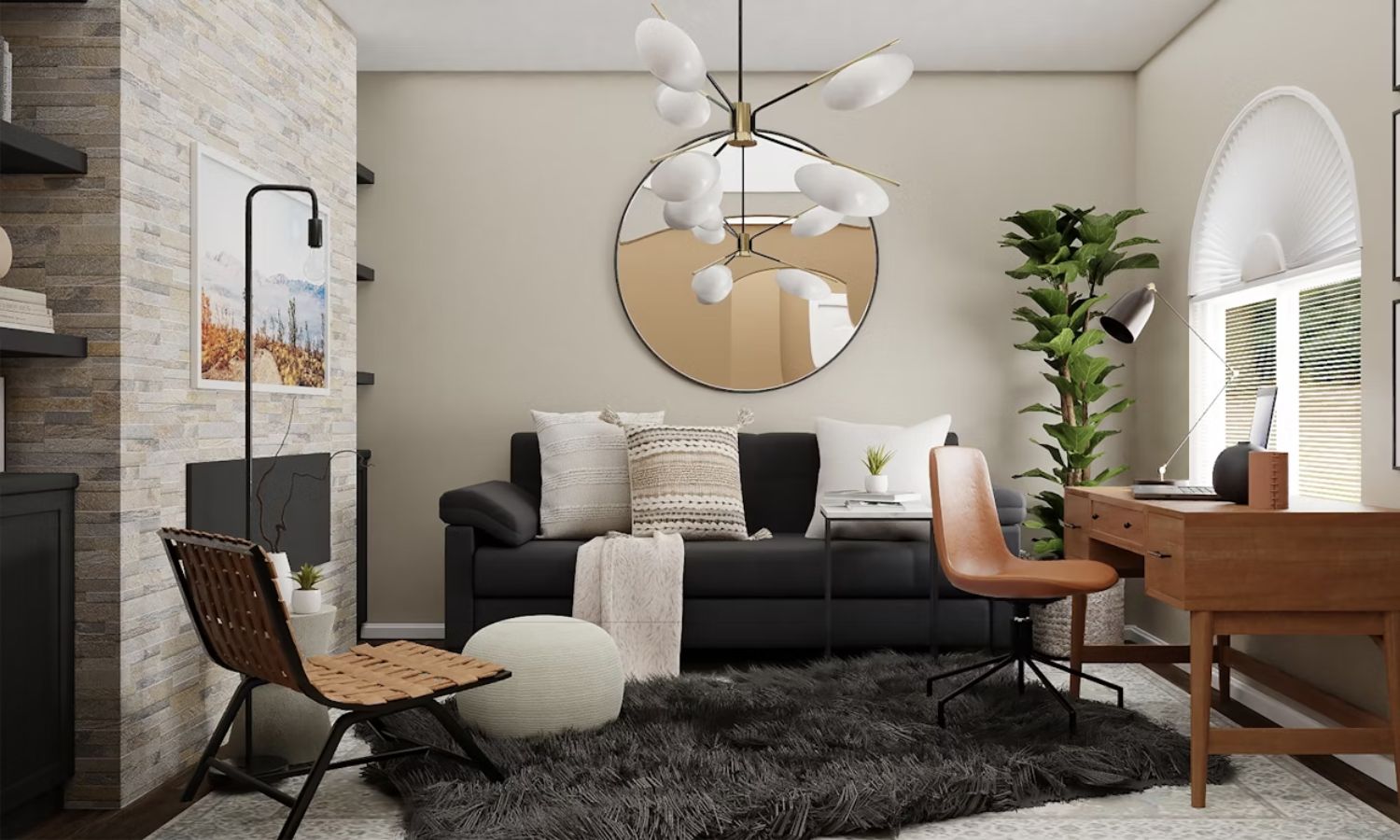
Place a large, neutral rug as your base and layer a smaller patterned one on top to build visual depth. It helps define a specific zone. Interestingly, boho interiors pair jute with bold prints to strike a relaxed, lived-in feel. Beyond style, this approach cleverly conceals wear on vintage pieces.
Contrast Furniture Colors With A Bold Base
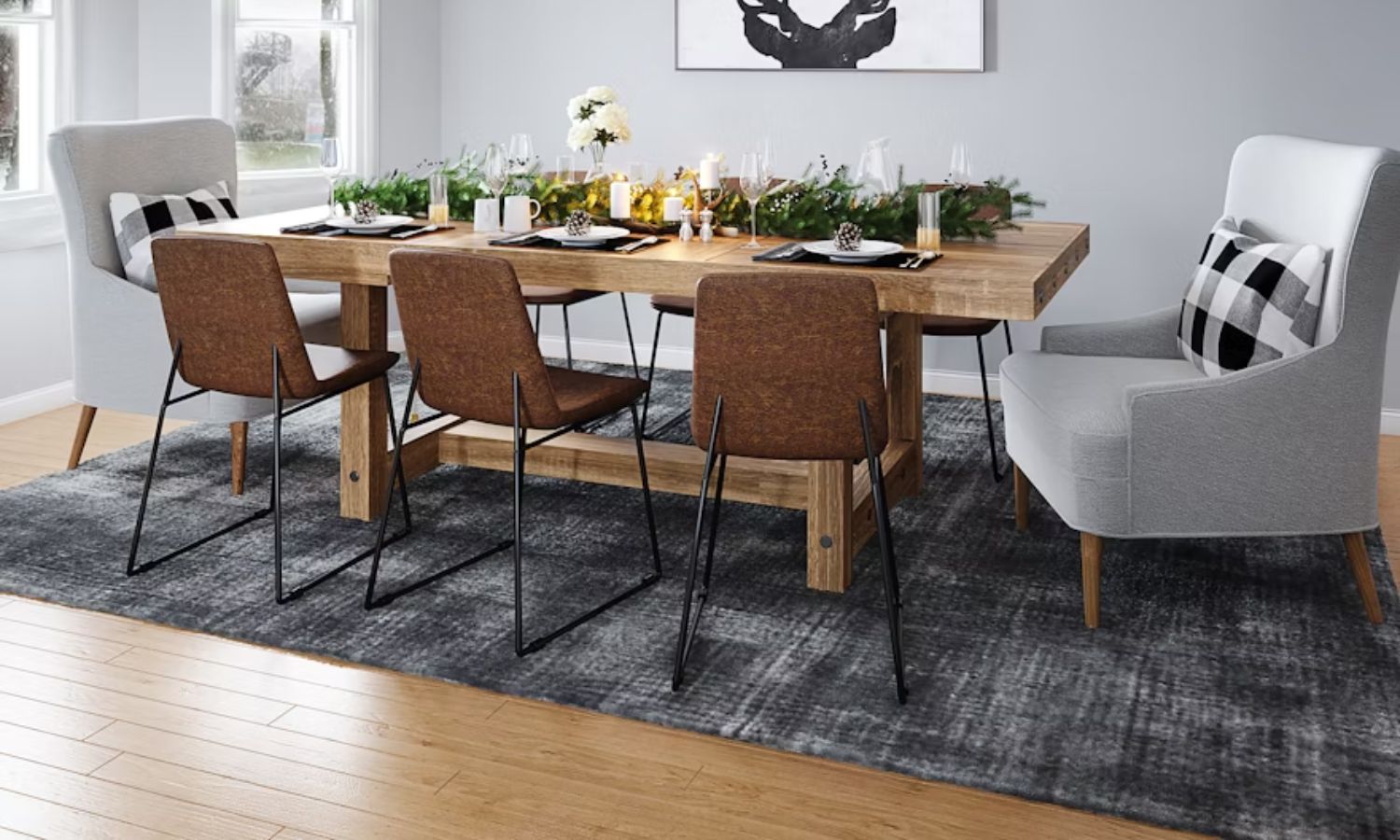
Dark-colored bases—like jewel-toned or navy Persian rugs—can carve out clear zones within open spaces. In modern minimalist homes, such dramatic rugs inject personality without clutter. Mid-century setups benefit from the depth of darker hues. Contrasting rugs are practical, too, as they camouflage pet fur and everyday debris.
Add Visual Weight Beneath Floating Furniture
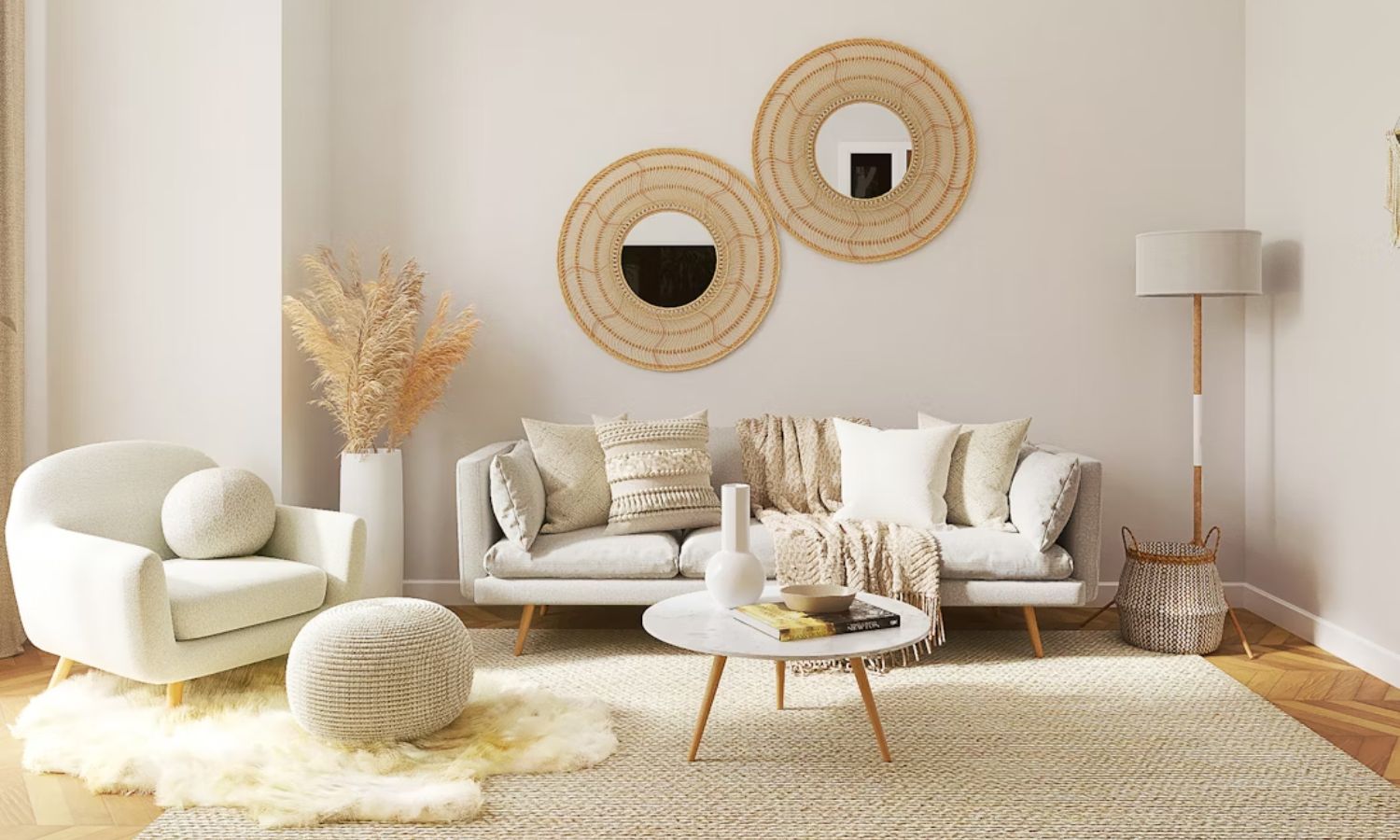
Lightweight or leggy furniture can sometimes appear to “float” awkwardly. However, the right rug adds visual weight to anchor the space. Designers generally rely on this trick to add substance without overcrowding the room. Even minimalist layouts feel more finished with a rug grounding the flow beneath.
Make Small Spaces Feel Bigger With Light Rugs

If you want to make a small room feel bigger without knocking down walls, start with a light rug. Creamy tones reflect natural light and open up the space, almost like a mirror on the floor. Rugs with thin borders or uniform shades stretch your eye across the room. It’s a favorite trick in Scandinavian homes.
Use Round Rugs To Soften Angular Layouts

Too many straight lines can make a room feel stiff. That’s where a round rug comes in, as it breaks up the angles and brings in a softer, more relaxed vibe. These rugs are great for creating zones in square rooms and are often used in nurseries to promote calm. Feng Shui even favors curves for better energy flow.
Align Rugs To Direct Traffic Flow Naturally
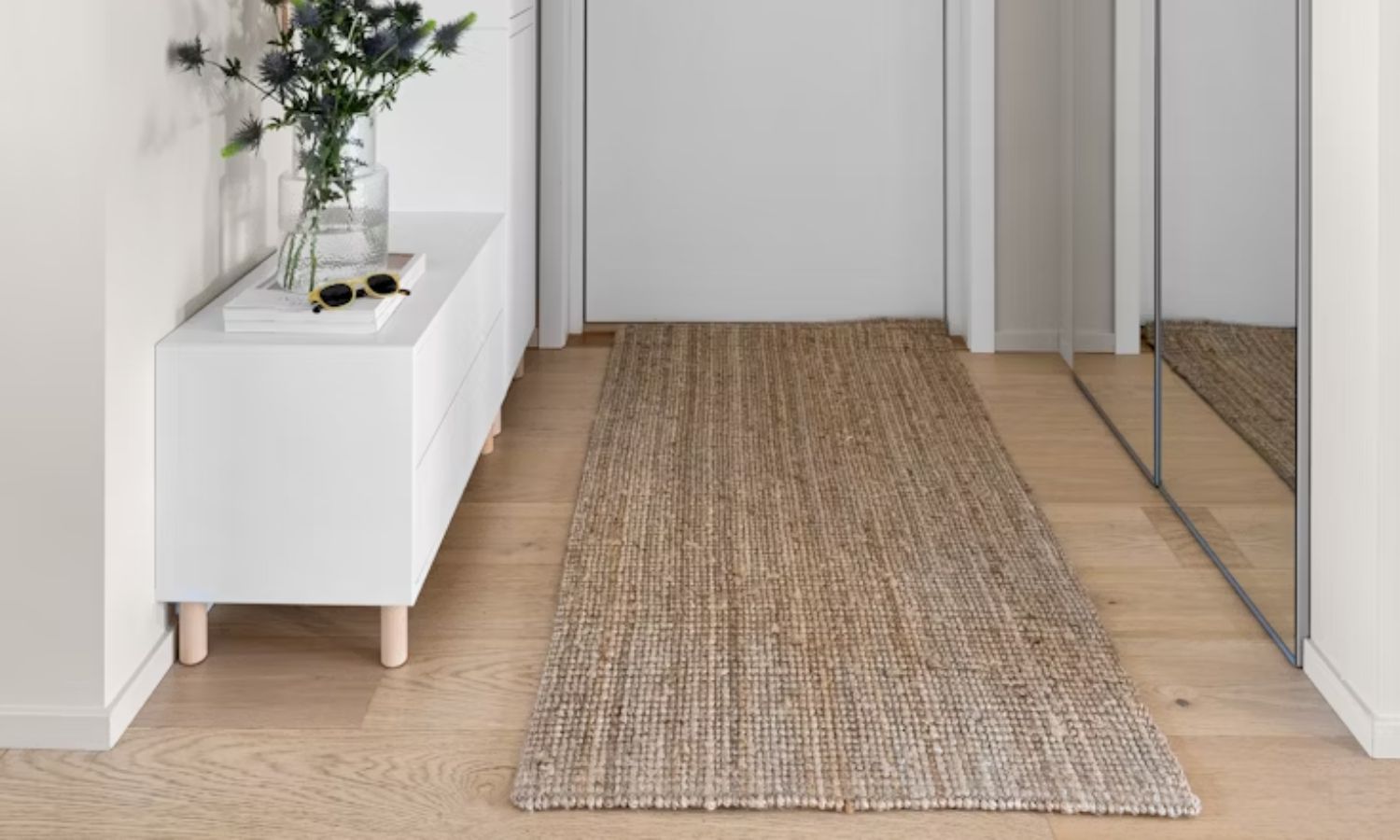
Laying rugs along natural paths, like in hallways or between seating, gently guides movement without clutter. Runners lead foot traffic, while diagonal rugs help steer around corners. You might also notice that hotels use this trick to keep guests moving smoothly. In short, placed right, a rug keeps your layout feeling intentional.
Zone Off Workspace Corners In Shared Rooms
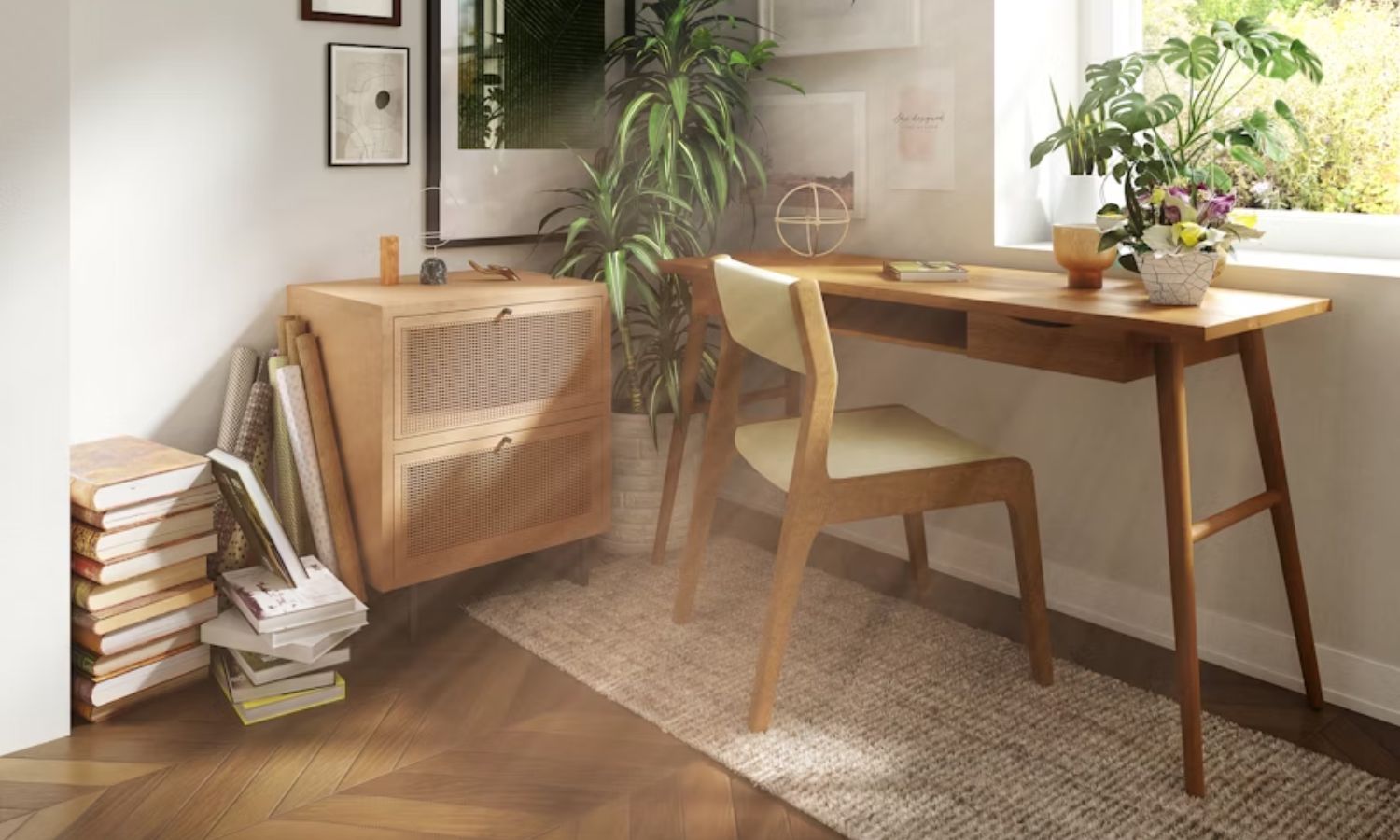
When your living room doubles as your office, a rug under the desk can work wonders. It quietly tells your brain, “This is the work zone.” Simply place a nice rug behind your chair, and your video calls suddenly look more put together. Usually, small faux cowhides are popular for tiny setups.
Extend Visual Lines With Striped Rug Patterns
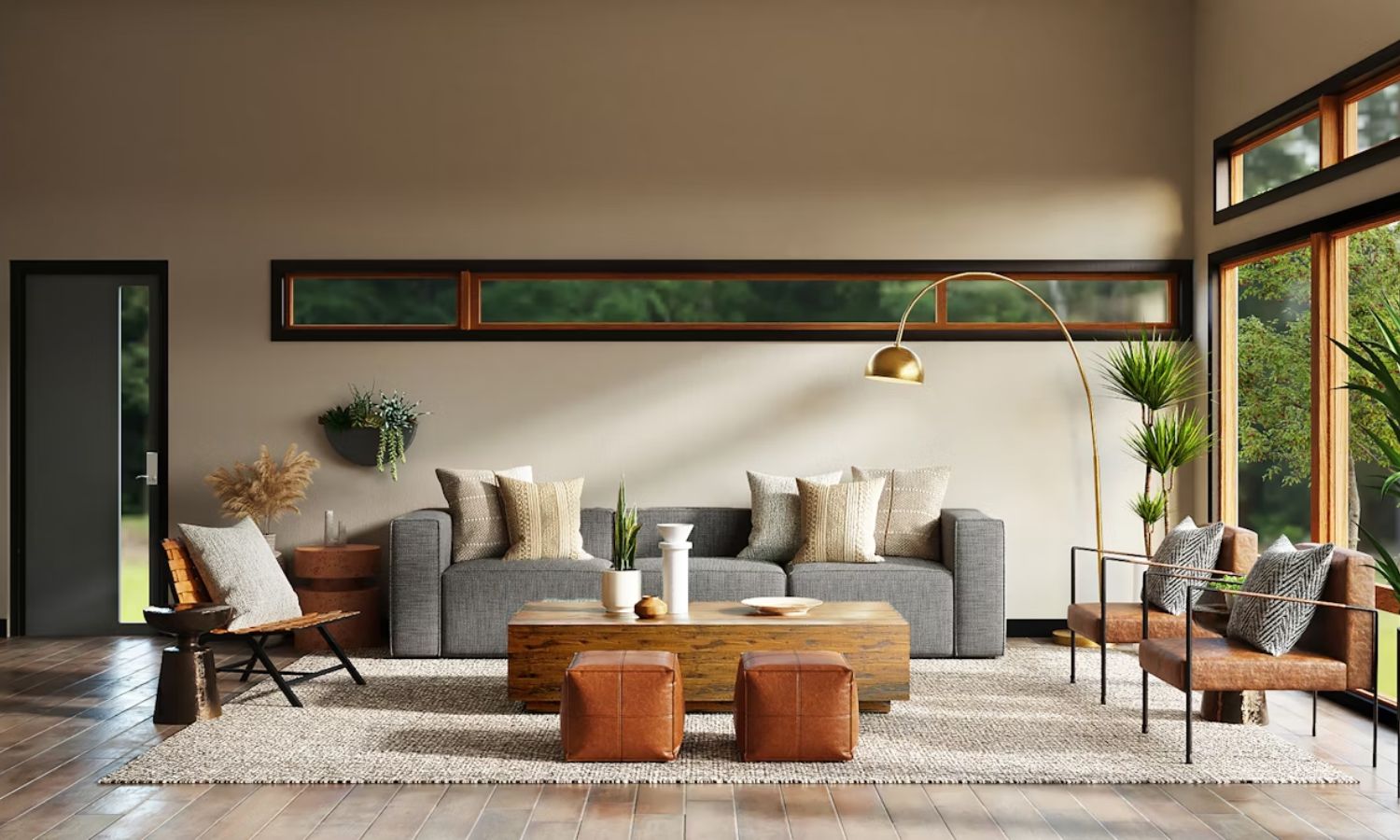
Want to make a room feel longer or wider without moving a single wall? Striped rugs do just that. Vertical stripes pull the eye across the space, stretching it out visually. Horizontal ones are perfect for widening tight hallways. Directional patterns like these are commonly used to emphasize or reshape architectural lines
Center A Chandelier Above A Defined Rug Zone
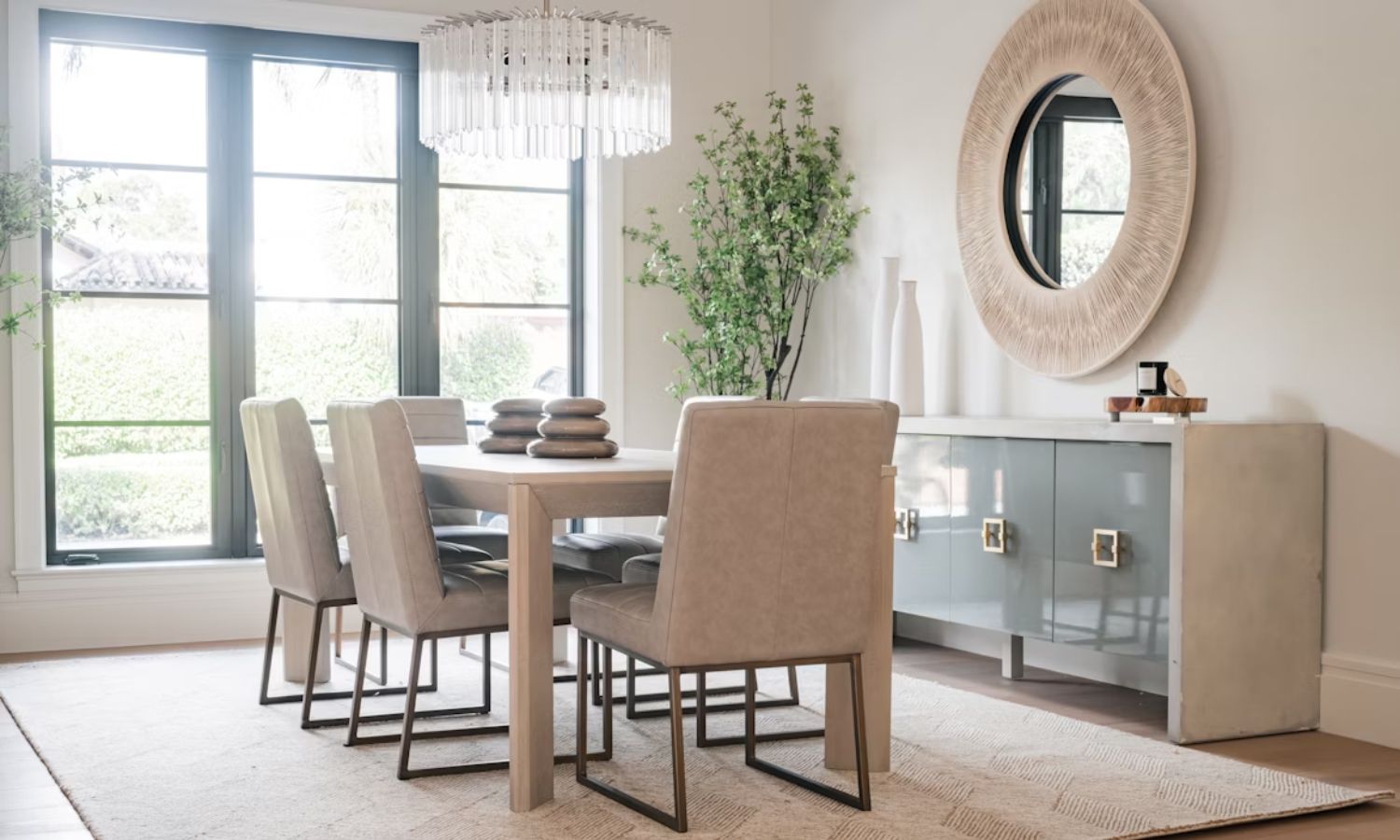
When both the chandelier and rug are centered, they anchor the space from floor to ceiling, making everything feel balanced. It’s a classic setup in dining rooms, where the rug, table, and chandelier work as one unit. Also, if the light isn’t perfectly placed, using an oval rug can help even things out.









